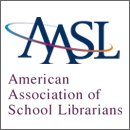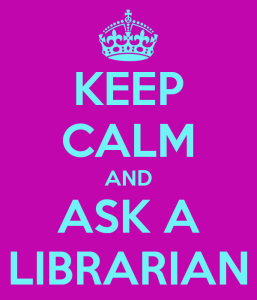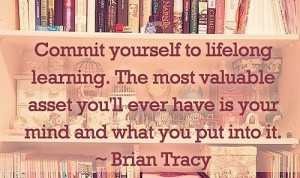 AASL has a new advocacy campaign. At ALA Midwinter, buttons were available saying “Ask Me How School Librarians Transform Learning.” It’s a great idea—if you are able to answer the question. If you are unsure of what to say, you can go to http://www.ala.org/aasl/advocacy/tools/transforming for a free PDF download of a 29 page magazine done as a supplement to the September/ October 2014 issue of American Libraries. In addition to excellent articles, there is a two-page infographic explaining what we do to transform learning.
AASL has a new advocacy campaign. At ALA Midwinter, buttons were available saying “Ask Me How School Librarians Transform Learning.” It’s a great idea—if you are able to answer the question. If you are unsure of what to say, you can go to http://www.ala.org/aasl/advocacy/tools/transforming for a free PDF download of a 29 page magazine done as a supplement to the September/ October 2014 issue of American Libraries. In addition to excellent articles, there is a two-page infographic explaining what we do to transform learning.
I recently was asked the question by a school librarian, and rather than just send her the link to the magazine, I decided to tell her my ideas on how we make this difference. Here’s what I said—with some commentary.
School librarians:
Show students (and teachers) how to use Google more effectively to retrieve more relevant sites- Since we know no matter what we say, for most people Google is a first stop to find information (although students are frequently going to YouTube first), we work at changing how they do it. Students tend to check only the top two results. If their query is not well-constructed what they find will likely not be relevant. We also let them know about Google’s filters which skew their results based on their previous searches.
Teach students how to evaluate information for accuracy and validity – In the past, students assumed if it was in print it was true. This behavior is even truer on the Internet (and in social media). We show them “misinformation” sites to raise their awareness and then give them techniques to ensure what they find and use—whether for academic or personal use—is accurate.
 Incorporate the use of databases into research so students produce more focused projects and are ready for the extensive databases they will find in college – For students to function successfully in college, they need to be able to go beyond Google for their research. By introducing them to databases available in the library they learn how these resources are more likely to have the solid information they need and are prepared for the many more databases they will find in a college library.
Incorporate the use of databases into research so students produce more focused projects and are ready for the extensive databases they will find in college – For students to function successfully in college, they need to be able to go beyond Google for their research. By introducing them to databases available in the library they learn how these resources are more likely to have the solid information they need and are prepared for the many more databases they will find in a college library.
Work with teachers to integrate the most current technology and online resources engaging students’ interest – Students live in a digital world. They are turned off by assignments which are more 20th than 21st century. Because school librarians keep up with new web resources and apps for content sharing, presenting, and other uses (see AASL’s Best Websites for Teaching and Learning and Best Apps for Teaching and Learning), they are uniquely positioned to help teachers integrate these authentic learning projects and/or collaborate (or cooperate) in developing global and digital citizenship projects connecting students to the larger world.
Promote critical thinking through inquiry-based learning – The AASL Standards for the 21st Learner are the guide for doing just that.
Provide a print-rich environment coupled with comprehensive knowledge of children’s and young adult literature (fiction and nonfiction) developing student’s love of reading leading to lifelong learning – Literacy is at the core of learning. School librarian’s knowledge of children’s and young adult literature along with their contact with students over several years make them uniquely capable of making the one-on-one contact with students to connect them with just the right book.
Every librarian has to demonstrate How School Librarians Transform Learning every day. Are you doing all of these? Do you have any other ways we transform learning?
